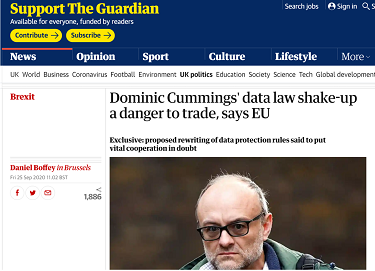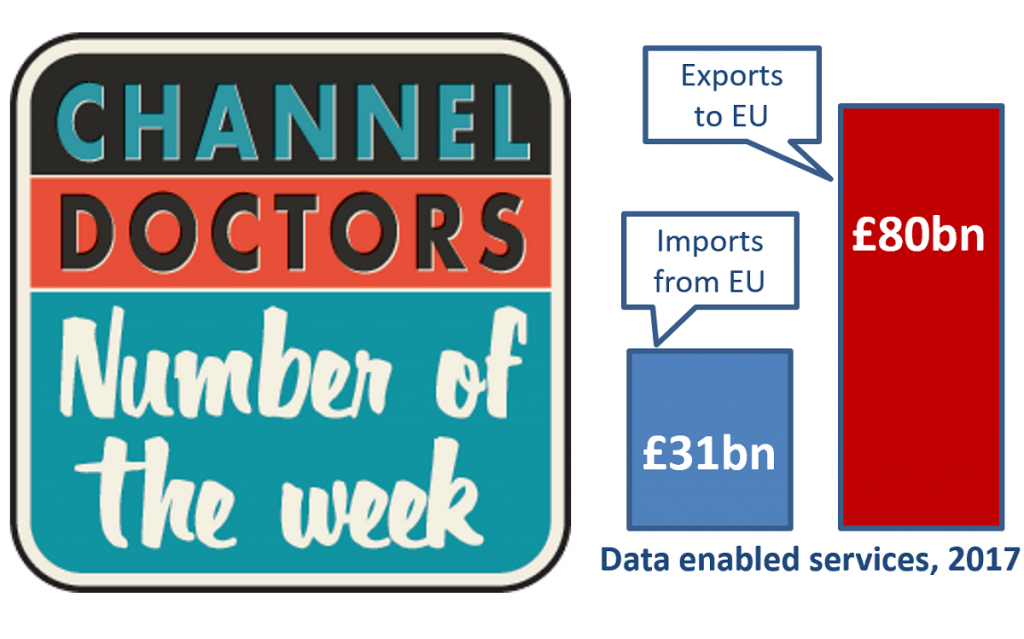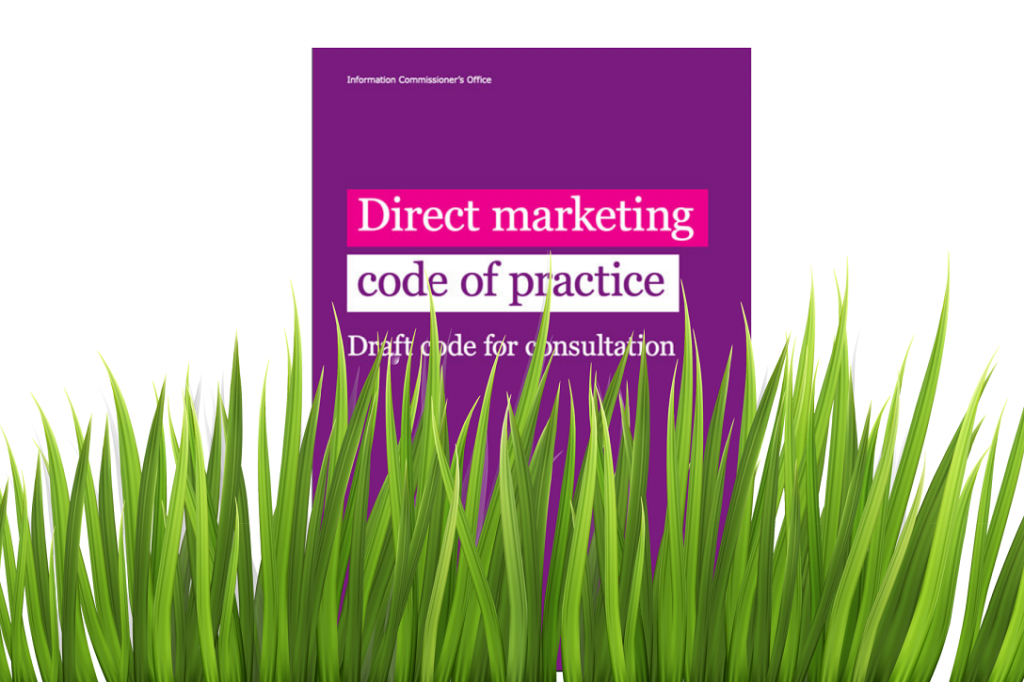October’s Monthly Compliance Newsletter
The Curse of the Mask!
This month’s headlines:
· The curse of the mask! The ICO fines dodgy Covid marketers again
· BA’s incredibly shrinking data breach fine
· Glimmer of hope for firms denied business interruption Covid insurance pay-outs from FCA’s court victory
· The Competition & Markets Authority says “No no” to anti-competitive Viagogo & Stubhub merger
· Ofwat serves notice that suppliers’ bottom lines will be directly impacted by their customers’ experiences
Download it here:
New Normal or New Abnormal, consumer behaviour’s changing

Lots of interesting numbers this week, all from Infinity‘s Andy Vale who has just published a blog looking at inbound call volumes by sectors over recent months (the link’s in my comment below). Infinity do clever stuff tracking the source of inbound calls the way marketers have grown used to being able to do easily for digital responses.
Andy highlights the shifts in real-life response volumes across a number of sectors including automotive, property, home & garden retail and travel – not all of which are what we might expect.
Perhaps the most intriguing is Infinity’s data on the private healthcare sector which shows record call volumes and its biggest private healthcare client’s September volumes up 70% over the same time last year.
As ever, the devil and the underlying explanation is in the detail, but the raw stats alone again demonstrate that whether it’s a New Normal or an Ongoing Abnormal, shifts in customer behaviour continue to challenge organisations across business sectors (as well as that it’s always good to know where your consumer contacts are coming from).
PS Andy’s also recorded a podcast on this subject with Overdrive Digital‘s Jon Quinton
Don’t forget to be #customerfirst
New research from McKinsey & Company says that globally the Covid-19 has spurred a growth in “…the digitization of customer interactions” that would have taken 3 years, prior to the crisis.
That’s impressive, but not if the shift has been achieved by denying access to analogue channels and/or failing to resource customer support and guidance for digital.
You can be #digitalfirst, but you’d better be #customerfirst too!
#digital # cx# cex #customersimple

Driving eCommerce, 50,000 Steps at a Time
Marks & Spencer has asked content specialist agency Quill to re-write 50,000 product descriptions to help drive online conversion.
A fascinating insight into the level of effort required across so many detailed areas in order to optimise the online customer journey – this one focusing on the old elusives;
- Clarity
- Benefits
- Plain English
Thanks to Sam Richardson of Twilio for highlighting this story and M&S’ Stuart Stiles for taking the time to explain the background – and how M&S is ‘closing the loop’ by tracking #NPS and returned order rates for the products, too Charged Retail‘s story is here.

£49bn
According to government estimates from 2017, the UK has a £49bn trade surplus in ‘data enabled services’ trade with the EU. The UK imports £31bn worth of those services from Europe, but exports £80bn.
And that’s why
- It’s crucial that the UK secures a ‘data adequacy’ judgement from the European Commission by the end of the year
- As The Guardian explains, it’s very unhelpful that the government seems to suggesting that the UK will diverge from the current ‘GDPR standard’ of data protection
The Guardian article is here.


NEWS: Direct Marketing – Uncoded not Decoded (Part 2)

he updated Direct Marketing Code of Practice is now in the long grass
Last week we revealed that the ICO had told the DMA that the updated Direct Marketing Code of Practice was to be “significantly delayed”, certainly well into 2021 (and it must be true because Decision Marketing then said the same !)
So, what does this mean?
As we all know, predicting the future just keeps getting more tricky, but here are my two safe bets as to what will happen in the world of customer acquisition, retention and service from a personal data privacy perspective between now and whenever the new Code emerges:
1. Data privacy compliance will remain a long way down most organisations’ list of priorities.
The sky didn’t fall in on 25th May 2018 when the GDPR / new Data Protection Act went live and for most companies, life has gone on largely as it did before. Most – but far from all – ICO enforcement actions have been against the dodgy and the woefully unprofessional. And most action and fines have been based on the (very) old Privacy and Electronic Communications Regulations (PECR), not the shiny new post-GDPR Data Protection Act (see our infographic ‘And then what happened…?’).
2. The murky world of third-party data will continue to be clouded in misinformation and wishful thinking
This was perhaps inevitable when ICO enforcement actions are rare and the Direct Marketing Code – which should be full of practical, ‘real life’ examples of what is and isn’t permissible – is outdated. The draft new Code that the ICO circulated for consultation earlier in the year proposed radical changes which would have massively altered the third-party data environment. But until the finalised code emerges, few players in the data market have an incentive to change their techniques and approach.
Caveat emptor!
PS If you want to stay up to speed on this sort of thing, sign up to receive our monthly newsletter here.
99% of brands look to DTC

99% of CPG (Consumer Packaged Goods) firms are investing in Direct To Consumer (DTC) sales models according to Salesforce research cited in Retail Week & Edge by Ascential‘s recent report. It describes a massively accelerated shift to DTC due to C19, evidenced by Nike forecasting $16bn of DTC sales this year and Adidas saying that 60% of its sales are now made through direct retail. And less high price ticket firms are also doing the same, including Kraft Heinz, Unilever & BrewDog.
FMCG firms trying to build direct relationships with consumers means facing new or radically altered challenges in data, pricing, customer service & logistics, to name just a few.
Brands will need outside expertise & experience to ensure they exploit these new opportunities, not make unnecessary mistakes & end up as dependent on Amazon as they used to be on 20th century retailers.
NEWS! Direct Marketing – Uncoded not Decoded (Part 1)

It seems that Information Commissioner’s Office‘s updated Direct Marketing Code of Practice won’t be released until well into 2021. Originally due this year, the ICO has now told the DMA‘s John Mitchison that the new Code will be “significantly delayed”
The draft Code the ICO circulated as part of its consultation exercise earlier this year apparently created a bigger response than just about any similar exercise by the ICO.
Maybe that’s not surprising. The Code is the nearest thing people in the sales, marketing & customer experience worlds will get to practical, contextual guidance and rules from the ICO. The underlying legislation is there in the GDPR and the 2018 Data Protection Act, but most of us have better things to do with our time that trawl through statute law wishing we had studied for a law degree.
And the Code gives a direct insight into how the ICO will interpret the law; we all have opinions, but the regulator’s are the most important!
So, what does this mean for businesses focused on acquiring, retaining and servicing customers in tempestuous times?
In a couple of days I’ll post my thoughts.
The rule of 2

You need 2 trainers to deliver an effective remote training course. Many organisations are cheerfully banking Covid cost savings from having a largely or wholly home-based workforce. But this isn’t a one-way street, as my good friend and gifted trainer, Darren Laskier, explained to me last week.
Training online should allow more participants per course, but also means that their involvement & engagement needs active encouragement. This can be achieved through chat; asking for and encouraging questions, comments & clarifications. However, monitoring & responding is a job in itself and doing so – and ensuring that the feedback from the floor is captured & reflected in the content being delivered – requires a second person. Alternatively, the larger group could break out into virtual syndicate groups. This can be very effective at fostering engagement and reinforcing learnings, but requires multiple facilitators.
Good trainers have – like all of us – adapted to different ways of working over the past few months. And in some senses remote training delivery can offer advantages over a traditional approach, but at a cost.
These are tough times for most firms, but cutting the L&D budget could be doubling damaging if training’s being done remotely!




